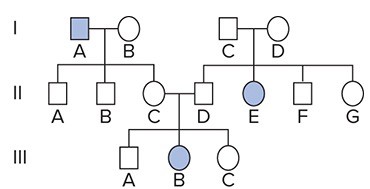The part of the brain that controls the basic responses
necessary to maintain life (such as breathing and
heartbeat) is the
a. medulla oblongata.
b. corpus callosum.
c. pineal gland.
d. cerebellum.
e. cerebral cortex.
Answer: a
You might also like to view...
Based on the following amino acid sequence, which region(s) is/are hydrophobic?
1[K-K-N-Q] - 2[A-G-G-V] - 3[Y-C-S-R] - 4[H-E-C-Y] A) region 1 B) region 2 C) region 3 D) region 4 E) both regions 1 and 3
Which of the following is NOT true of lipids?
a. They store energy. b. They function as structural components of cellular membranes. c. They function as hormones. d. They are nonpolar. e. They have many oxygen-containing functional groups.
What happens if a neuron is stimulated enough midway in an axon to trigger an action potential?
A) The nerve impulse would go both directions from the stimulus point, but only the axon end could transfer the message trough neurotransmitters to another neuron. B) Since neuron transmission is one-way, the nerve impulse would only be transmitted to the end of the axon and then through neurotransmitters to the next neuron. C) The nerve impulse could not be transmitted because it must be initiated at the dendrite end of a neuron. D) The nerve impulse would go both directions and the dendrite end would be stimulated to send a second message through this neuron.
Roberts Syndrome is an extremely rare genetic disorder that is characterized by mild to severe prenatal retardation or disruption of cell division, leading to malformation of the bones in the skull, face, arms, and legs. Shown below is a pedigree for a family with Roberts Syndrome. Consider couple II-C and II-D. What is the probability that their next two children will have Roberts Syndrome? McGraw-Hill Education
McGraw-Hill Education
A. 1/16 B. 1/32 C. 1/2 D. 1/4 E. 1/8